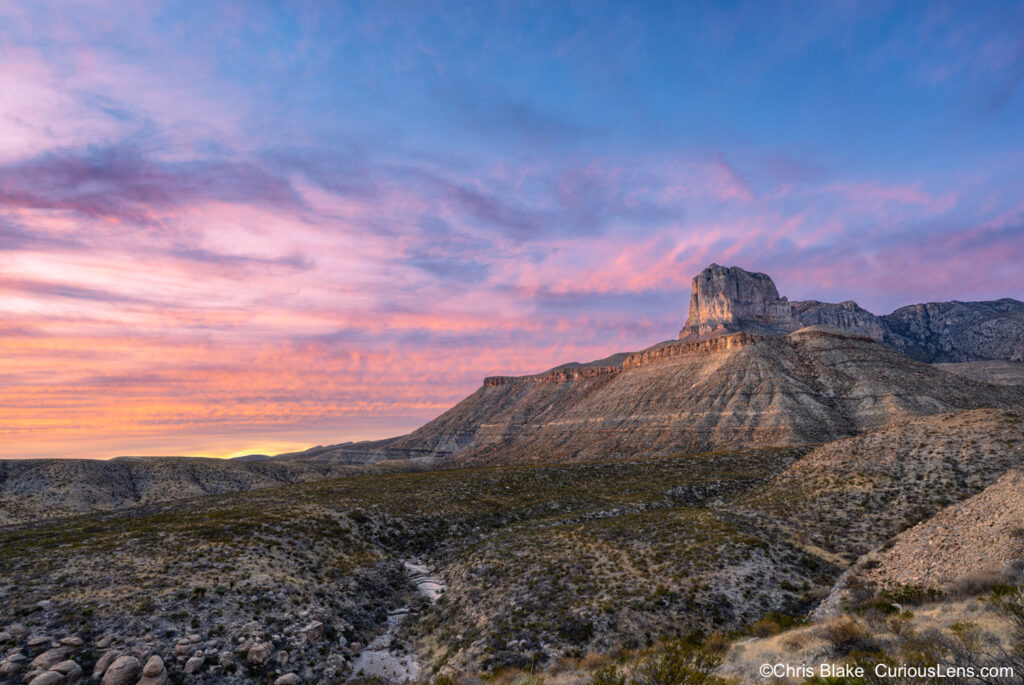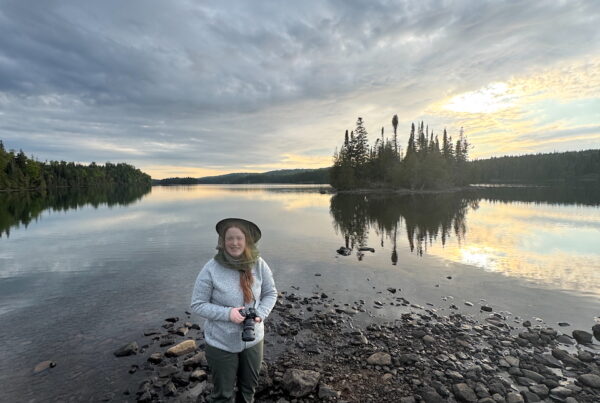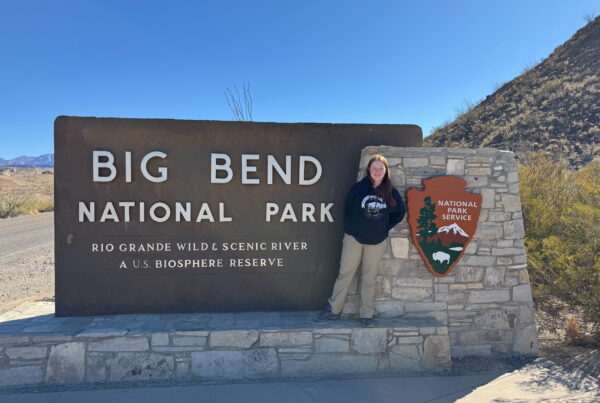Continuing our post-holiday tradition, we ventured west again just after Christmas. This year, our journey took us to New Mexico to explore three new National Parks: White Sands, Carlsbad Caverns, and Guadalupe Mountains in Texas. Though traveling right after Christmas is ideal for us, we weren’t the only ones with this idea—these parks were bustling with visitors!
White Sands National Park
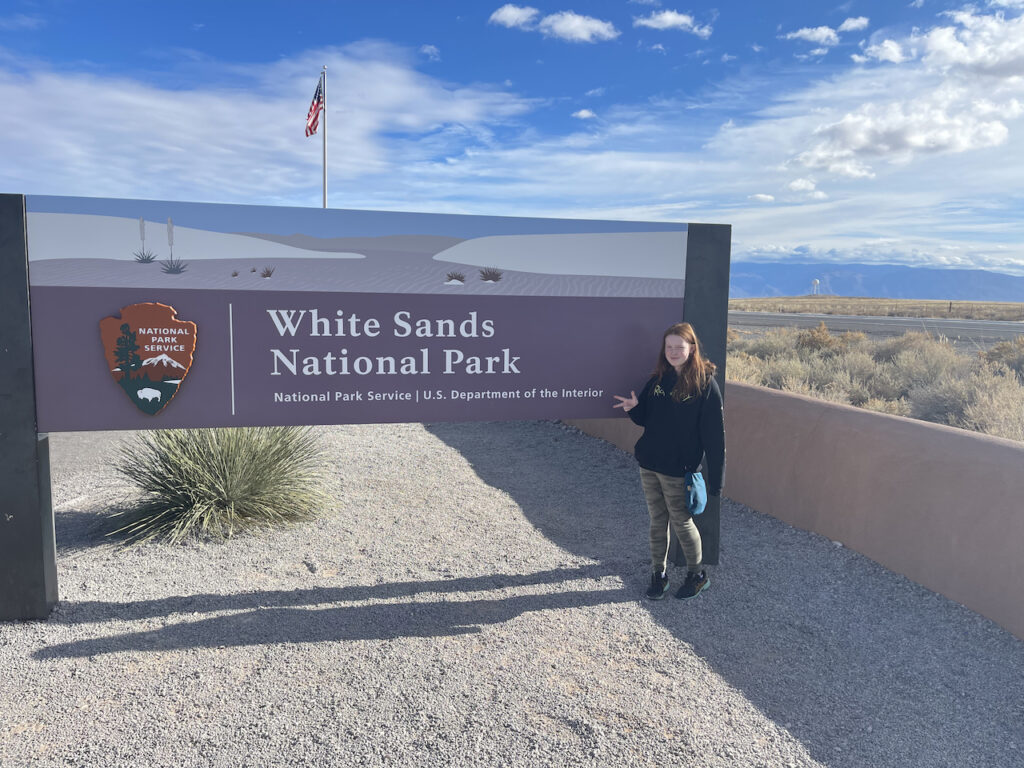
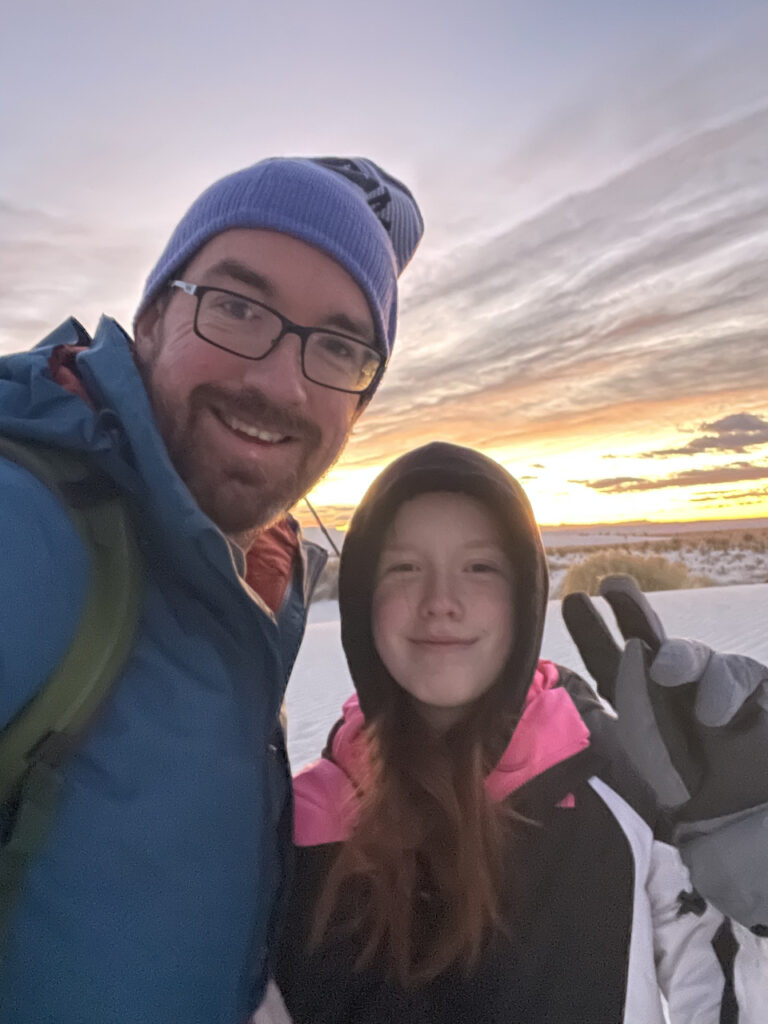
Our adventure began at White Sands, where we set up base in the charming desert town of Alamogordo, nestled among mountains. Known for its proximity to the historic Trinity test site—the location of the first atomic bomb explosion—Alamogordo offers a pleasant array of restaurants, shops, and accommodations, making it an excellent hub for exploring White Sands.
The efforts to protect White Sands date back to 1898, with the area officially designated as a National Monument by President Hoover in 1933. Most of the structures built today were crafted from adobe bricks between 1936 and 1938 by the Works Progress Administration. In December 2019, it was redesignated as White Sands National Park.
Encircled by the White Sands Missile Range and Holloman Air Force Base, established post-Pearl Harbor in 1941, the park occasionally closes during missile testing. We were fortunate to secure a special use permit allowing us early access, affording us a serene sunrise experience amidst the dunes—far from the afternoon crowds.
White Sands boasts the largest gypsum dune field in the world, covering 115 square miles with dunes averaging 30 feet in depth. Formed 7,000 to 10,000 years ago, the dunes are a dynamic landscape, constantly reshaped by the wind. Despite the cold semi-arid climate, our December visit was quite chilly in the early morning, though it warmed up pleasantly by the afternoon.





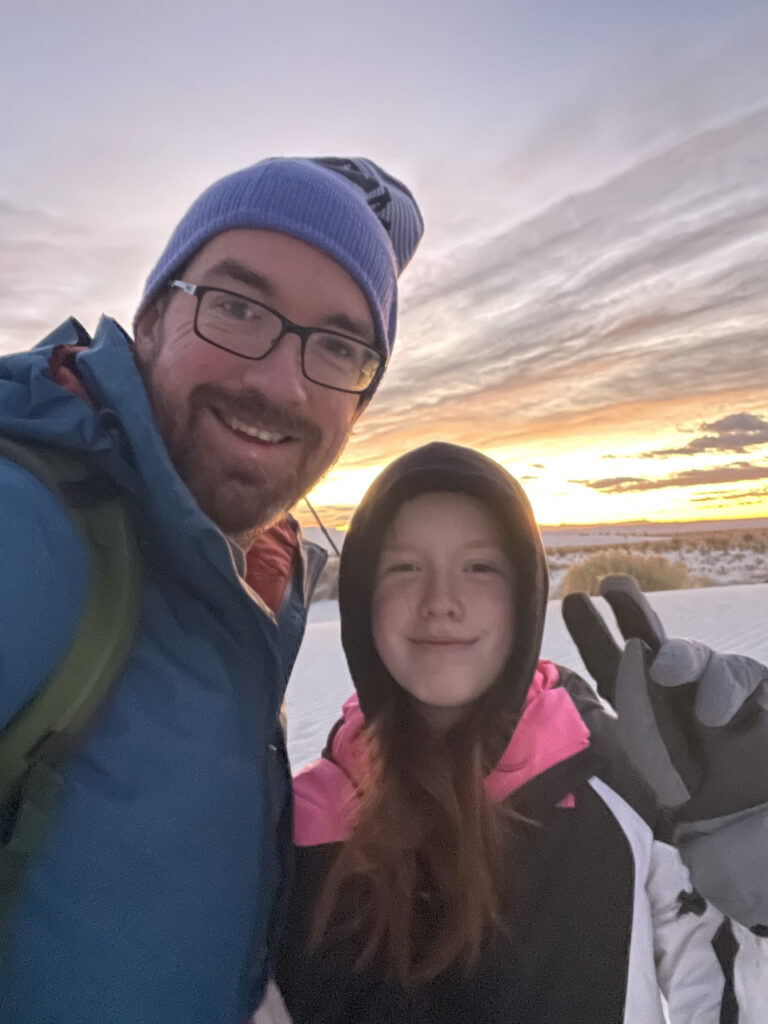
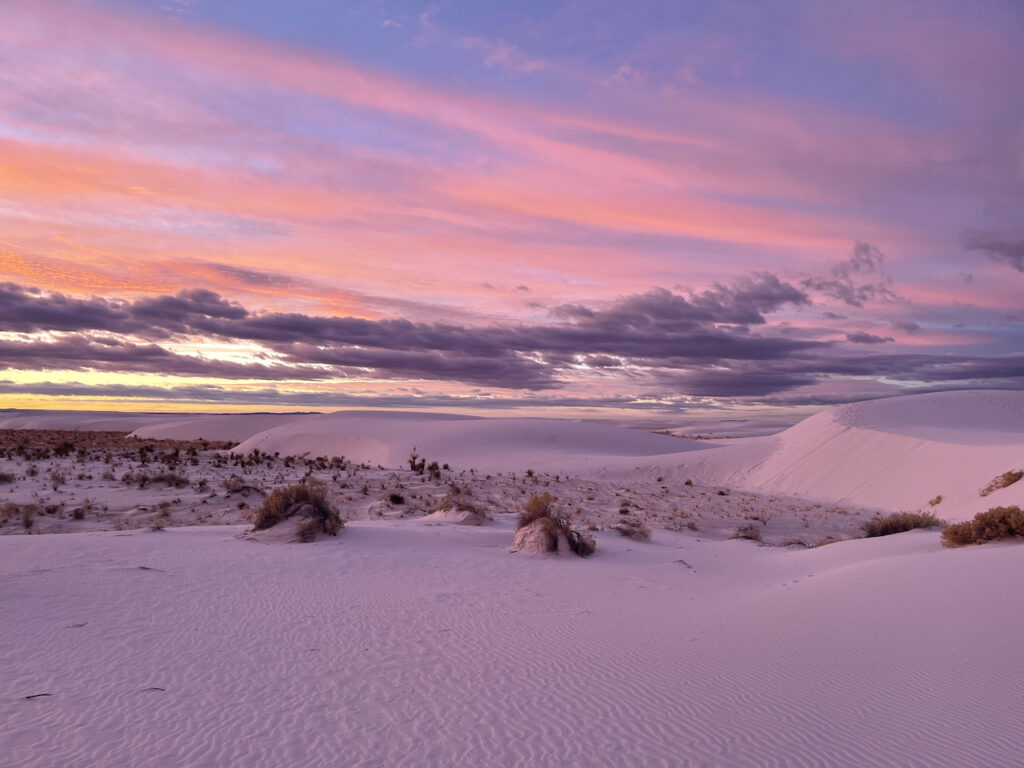
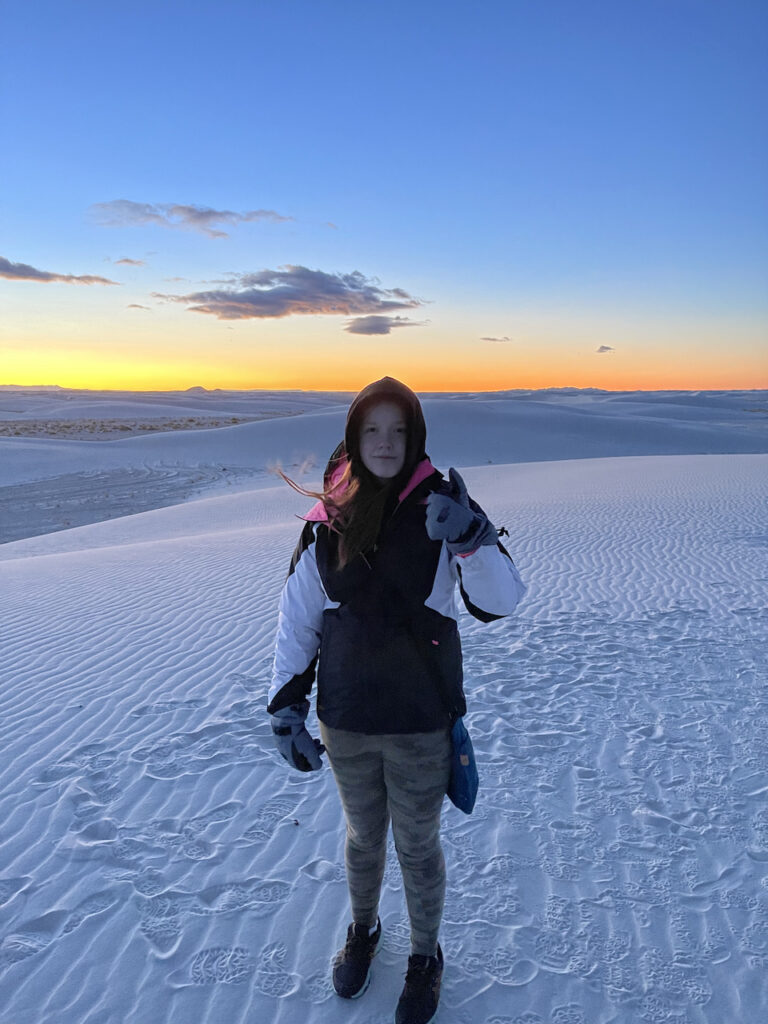
Over our four days, early mornings provided the best photography opportunities, with overnight winds smoothing the dunes. The park’s popularity peaked during our stay, with activities like dune sledding drawing many visitors. Our last morning was highlighted by a breathtaking sunrise, painting the sky and sand in stunning shades of red—a rare and perfect moment!
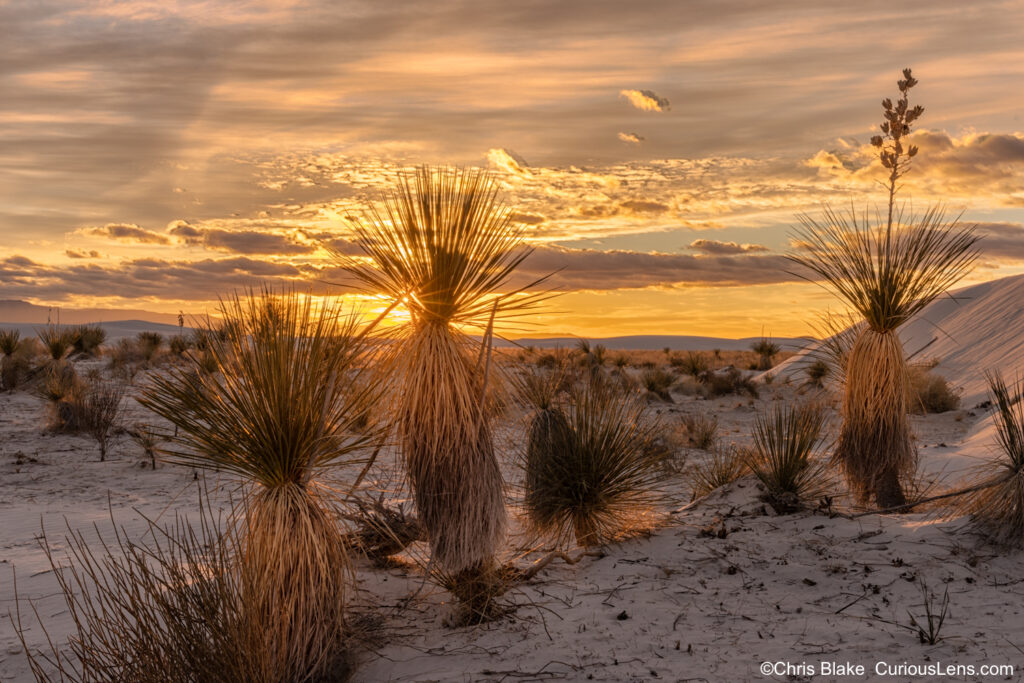
Carlsbad Caverns National Park
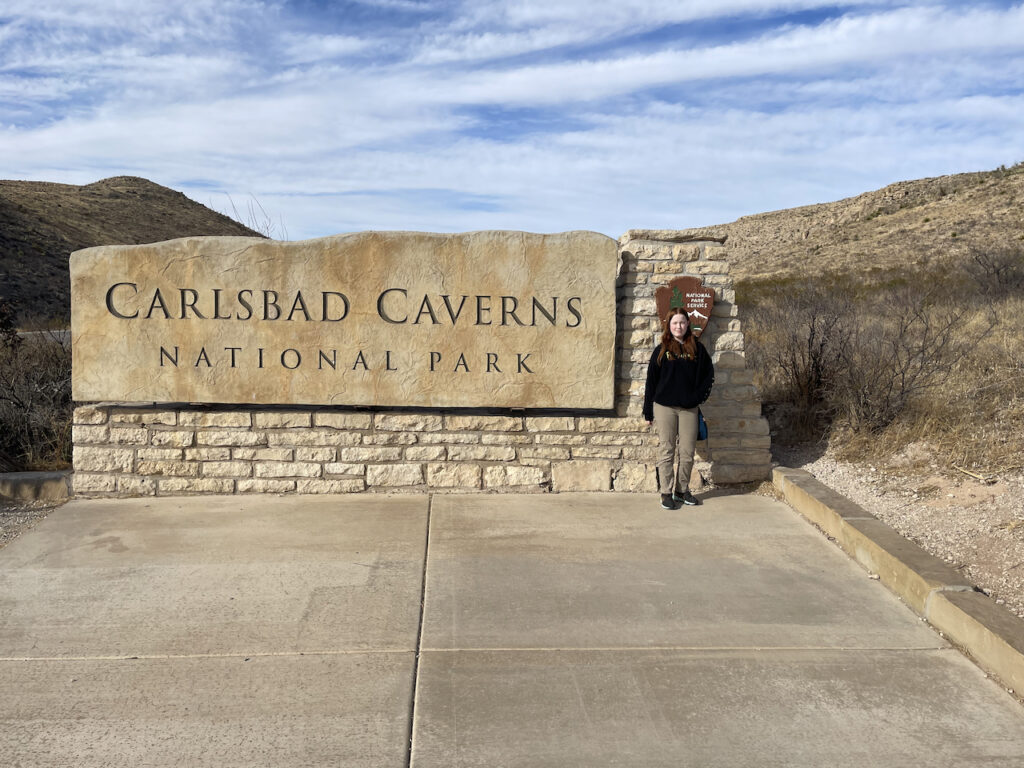

After leaving the shimmering expanse of White Sands, we journeyed on to our next two national park destinations. Both Carlsbad Caverns and Guadalupe Mountains National Parks were conveniently accessible from the quaint town of Carlsbad, New Mexico. Despite its modest size, Carlsbad offered all the essentials we needed for our stay, including Danny’s Place BBQ—an exceptional spot for a hearty meal after a day filled with hiking.
We celebrated New Year’s Eve here, enjoying a delightful dinner at a charming local restaurant. Carlsbad Caverns National Park, nestled within the Guadalupe Mountains in southeastern New Mexico, is home to over 300 known caves, though the main attraction where we spent the bulk of our time is the famed Show Cave.
Formed about 250 million years ago, the region once bordered an inland sea. As the sea gradually receded, it left behind a reef that was later uplifted by tectonic forces. These caves mostly formed in a limestone bed situated above the water table. Over millennia, chemical reactions produced sulfuric acid, which percolated upwards, dissolving the limestone and forming the vast cave systems visible today.
Although there are 118 recognized caves within the park boundaries, only three are open to the public. Like most visitors, we concentrated on the primary cave, which boasts over 23 named chambers—and discoveries are still being made. The Big Room, a staggering 4,000 feet in length, 625 feet wide, and 225 feet tall, stands as the largest single cave chamber in North America.


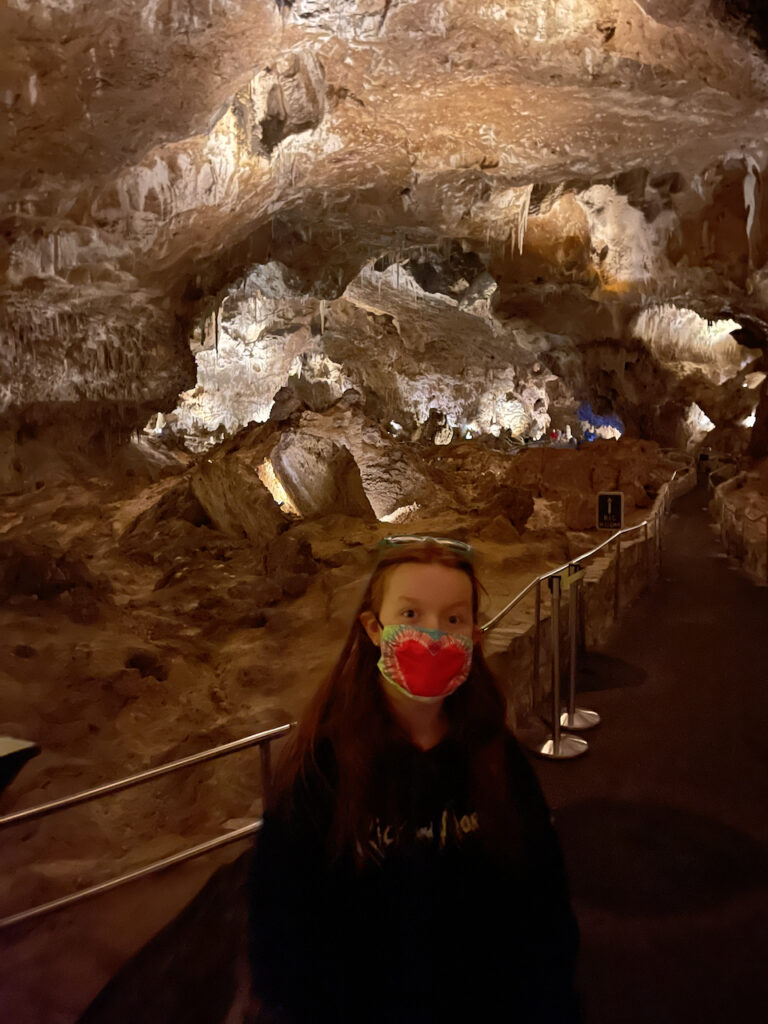

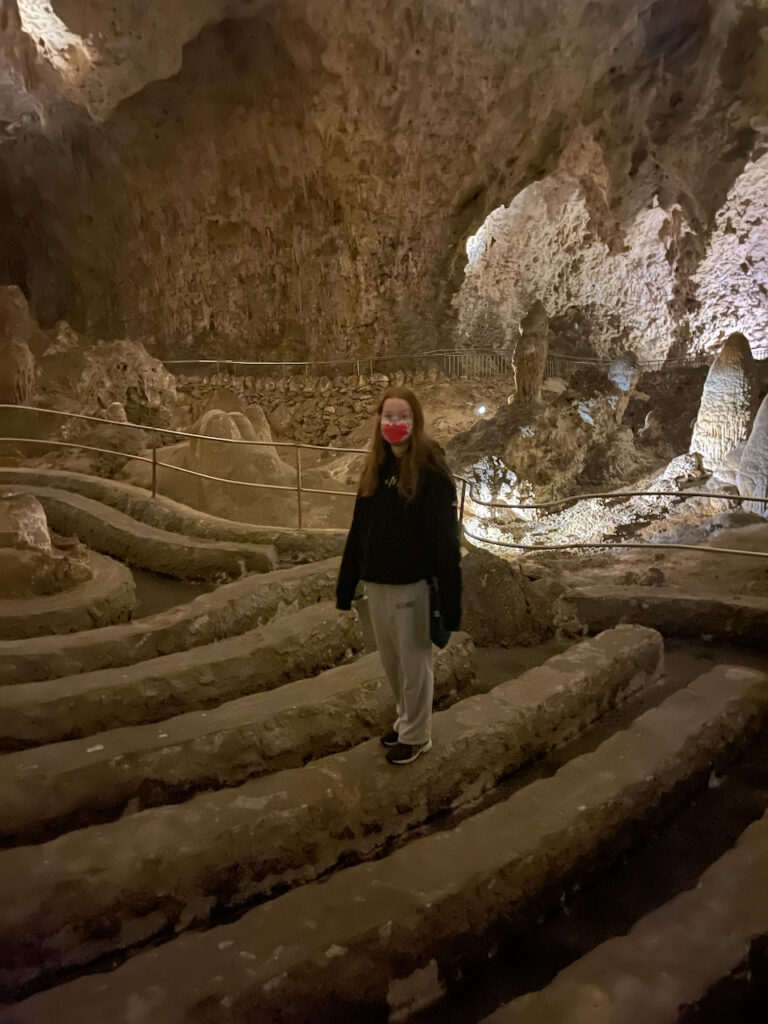
Protected initially as a National Monument in 1923, the area was designated a full national park in 1930 under President Herbert Hoover. Originally, access to the main entrance involved descending 750 feet via switchbacks through the natural entrance. However, in 1932, the park inaugurated a large visitor center complete with two elevators that transported visitors directly into and out of the caverns. This new center included amenities such as a cafeteria, waiting rooms, a museum, and a first aid station.
Visitors must purchase tickets in advance to either hike down to the caves or take the elevators. We secured early morning tickets for several consecutive days. Exploring the various chambers was exhilarating and surprisingly warm and humid. The pathways are well-maintained and spacious, but by late afternoon, they can become quite crowded.
We eagerly anticipate our return to the park. Unfortunately, we missed one of the park’s signature experiences—watching the spectacular exodus of bats from the cave at sunset during mid-summer. This awe-inspiring natural event remains high on our list for the next visit.
Guadalupe Mountains National Park

During our exploration of Carlsbad Caverns, we spent the bright middays underground, but our early mornings and sunsets were dedicated to the majestic Guadalupe Mountains. Nestled in a remote section of West Texas, the history of conservation efforts for this area traces back to the 19th century. Despite sharing the same mountain range with Carlsbad Caverns, the remoteness and the absence of paved roads for many years delayed its designation as a national park.
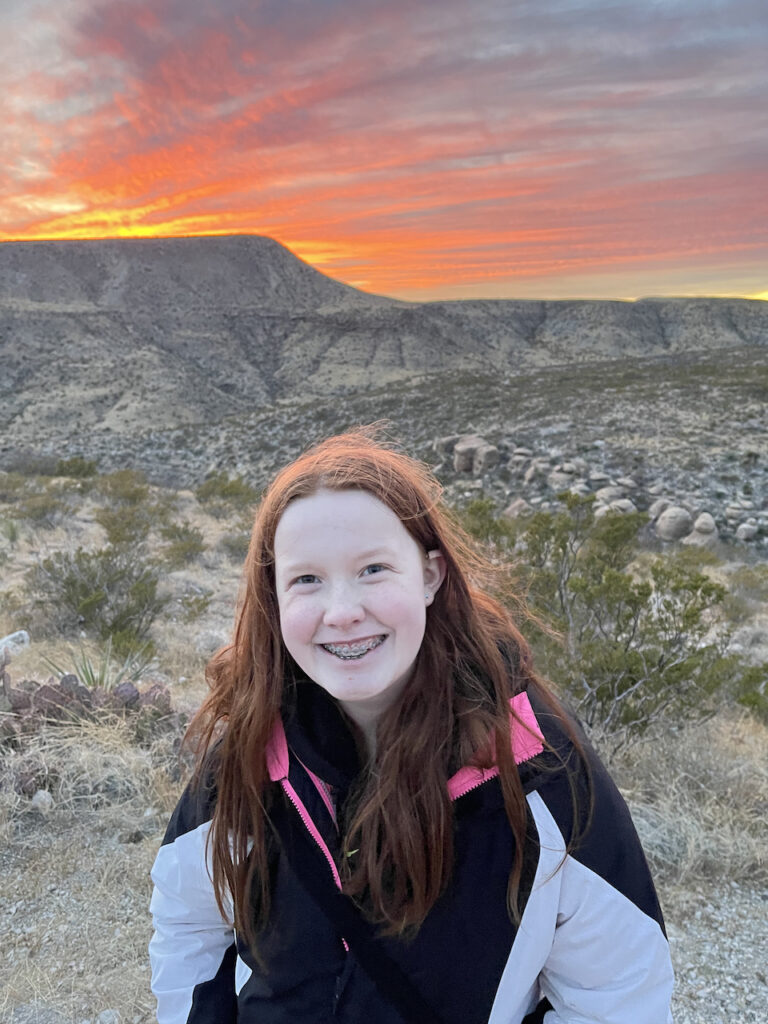
Archaeological findings indicate that this region has been inhabited for over 10,000 years, predominantly by small groups of people. The Spanish were the first Europeans to encounter the area in the 16th century, although they did not attempt to settle. By the mid-19th century, the Mescalero Apaches had established themselves in the mountains, a presence that continued until the pressures of western expansion brought more settlers through the area.
One of the earliest European settlers was Felix McKittrick, who arrived in the 1870s. McKittrick was a cattle rancher who constructed a homestead that has since been restored and is open for visitors today. While a few other ranchers followed, the population never grew significantly. Several mining ventures were also initiated but quickly abandoned due to the challenges of transportation and initial poor mining yields.
The park’s transformation began in earnest in 1921 when Wallace Pratt, a geologist working for an oil company, purchased land in the mountains. Captivated by the natural beauty, Pratt eventually donated 6,000 acres to the National Park Service. This land formed the nucleus of what would officially become Guadalupe Mountains National Park in 1972. Today, the park encompasses a vast 86,367 acres, preserving a rich variety of ecosystems and historical sites.
Our visit coincided with a bout of challenging weather, featuring storm clouds and brisk winds that filled many of our mornings and afternoons. We explored the area’s historical sites and the beautifully restored ranch houses. Unfortunately, the adverse conditions prevented us from attempting the hike to Guadalupe Peak, the highest point in Texas at 8,751 feet. Nonetheless, we enjoyed spectacular views of El Capitan—a prominent limestone peak dramatically different from its namesake in Yosemite.




Visiting the Guadalupe Mountains offers a unique glimpse into the geological and cultural tapestry of West Texas, marked by its rugged landscapes and resilient history. Whether you’re exploring its historical depths or climbing its lofty peaks, this park embodies the spirit of the American wilderness.
Conclusion
Our whirlwind 10-day exploration of these three parks was as exhilarating as it was enlightening. Each park offered unique landscapes and stories, enriching our understanding and appreciation of these natural treasures.
